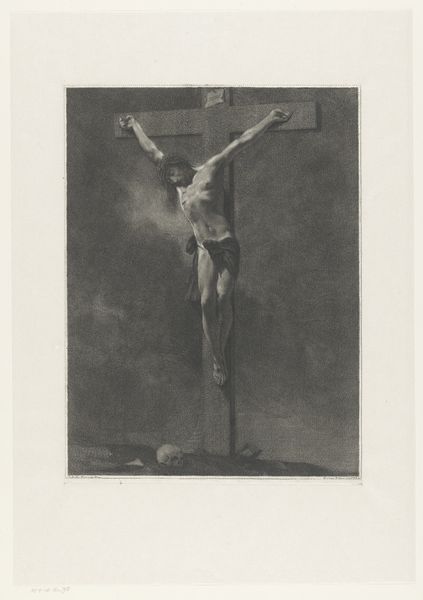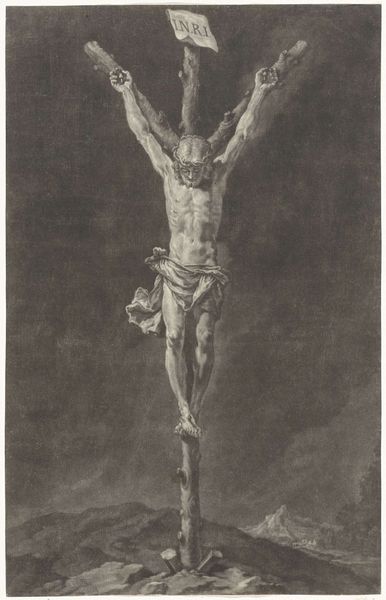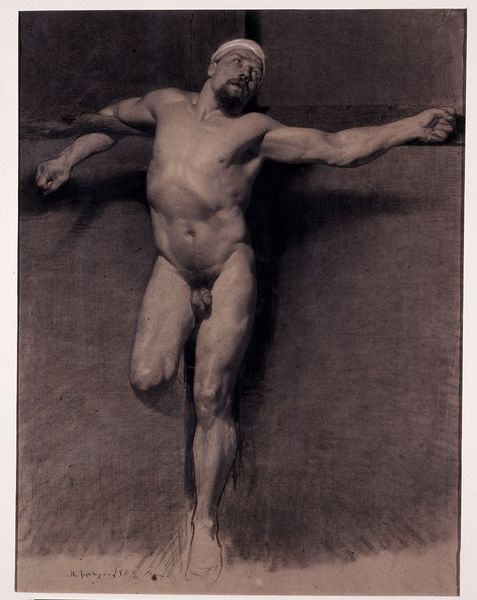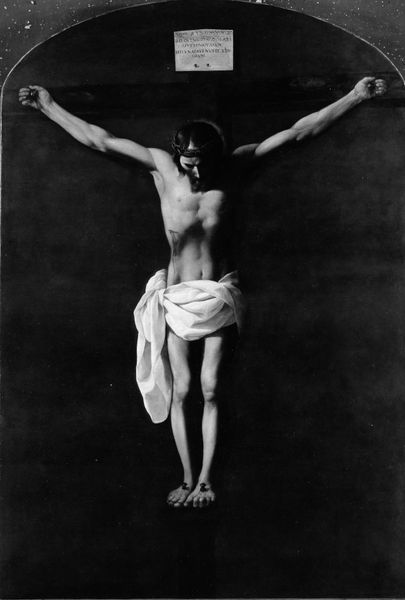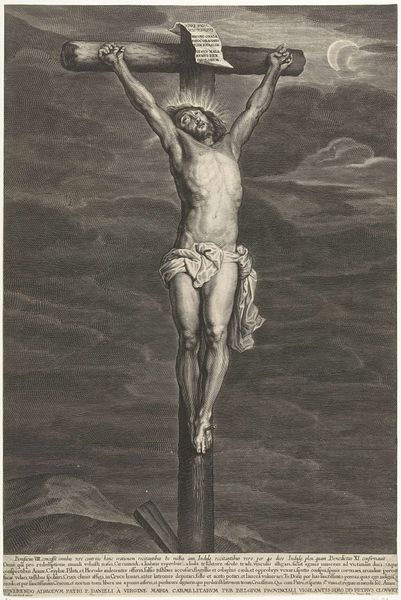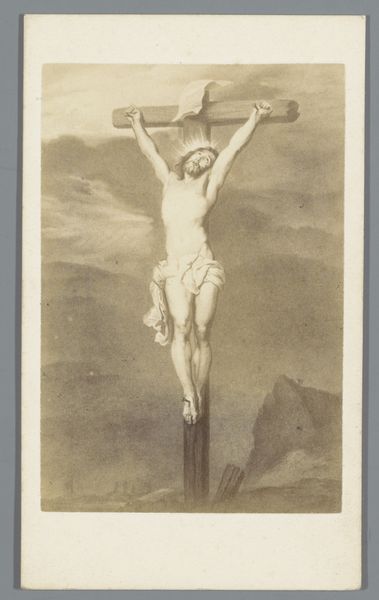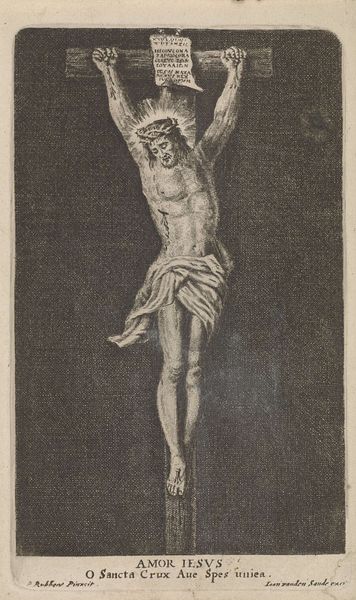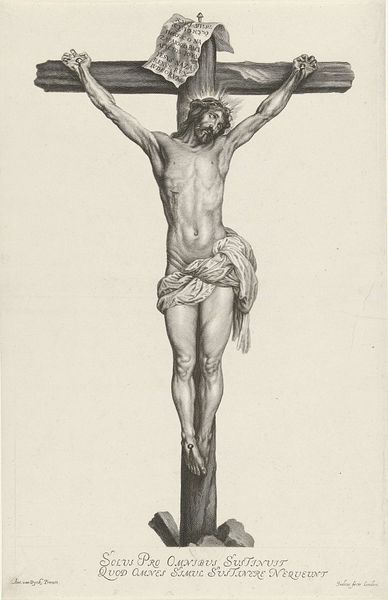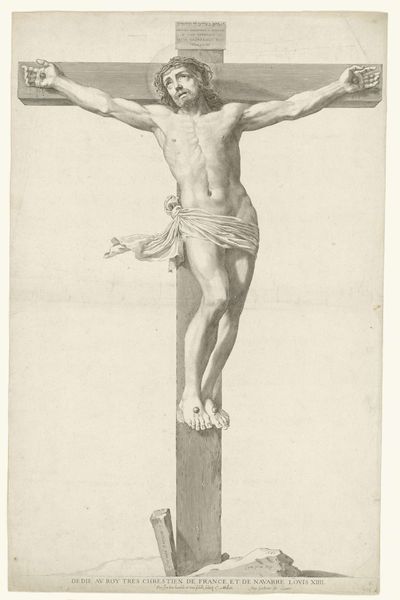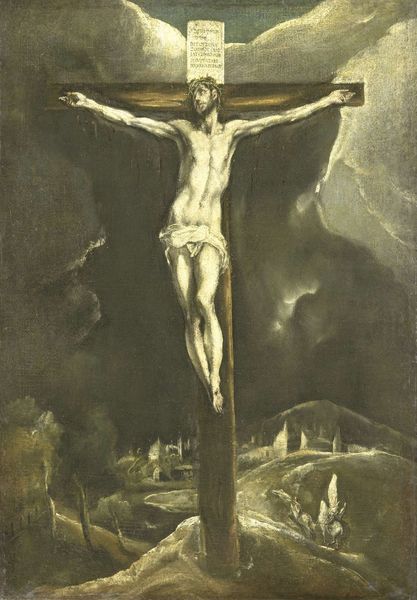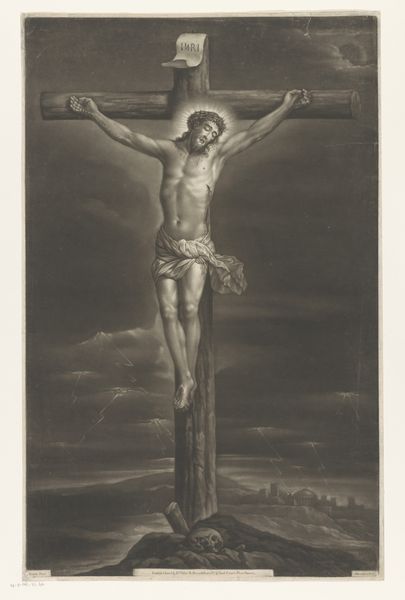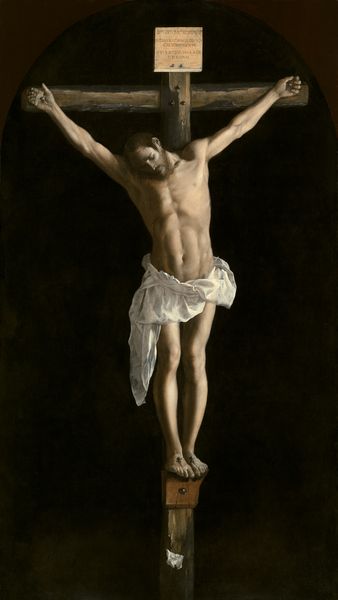
drawing, etching, engraving
#
pencil drawn
#
drawing
#
baroque
#
etching
#
pencil sketch
#
charcoal drawing
#
figuration
#
form
#
vanitas
#
pencil drawing
#
line
#
history-painting
#
nude
#
engraving
Dimensions: height 592 mm, width 450 mm
Copyright: Rijks Museum: Open Domain
Editor: Here we have Giovanni Marco Pitteri’s "Christus aan het kruis," created sometime between 1712 and 1786, using engraving and etching. The starkness of the image and the contorted figure against that cross…it's haunting. What historical dialogues are at play in this depiction of the crucifixion? Curator: This work exists within a long history of representing the crucifixion, but also within the socio-political structures that influenced its creation and reception. It seems impossible to ignore the political implications of a symbol so intrinsically linked to power, faith, and obedience during a time marked by social stratification. Think about the visual language. What power dynamics do you observe between the figure of Christ and the unseen forces that led to his suffering? Editor: I see the way the etching renders Christ’s body as almost ethereal, vulnerable even. The power feels…relational. Is this vulnerability presented as a critique of power, perhaps? Curator: Exactly. Consider this image in relation to feminist interpretations of suffering. The display of vulnerability can serve as both a reflection on personal strength and a statement about systemic inequalities. How does the vanitas symbolism – that skull at the foot of the cross – complicate the narrative of martyrdom and redemption? Editor: It's a memento mori…a reminder of the universality of death, suggesting that even Christ, in his divine form, is subject to mortality. It adds a layer of intersectional discourse to the work: suffering and death, applicable to all, regardless of identity. The stark imagery almost makes you want to take up a social cause, I'm interested now in challenging traditional representations. Curator: Yes. This piece, through its technique, imagery, and symbolism, becomes a prompt for deeper critical thinking and political analysis. The act of interpreting itself becomes a form of activism. Editor: This has definitely broadened my appreciation for how we can connect faith-based artwork to cultural discourse.
Comments
No comments
Be the first to comment and join the conversation on the ultimate creative platform.
